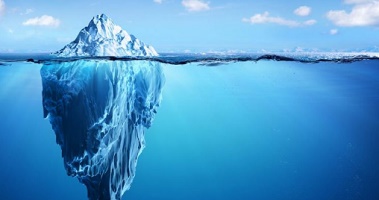What is the organizational structure?
We explain what the organizational structure is, its characteristics, types and elements that compose it. Also, what is an organization chart.
-
What is the organizational structure?
Organizational structure is known as the internal and administrative organization forms of a company or organization . This also includes the distribution of work in specific areas or departments according to the same structure.
In other words, the organizational structure of a company is the way it conceives itself, the way it plans its work and formally distributes its responsibilities . The organizational structure is the shape of a company.
Companies and organizations usually organize themselves based on the objectives they have set. On the other hand, their structure also responds to the internal management model they use, that is, how they conceive authority, administrative hierarchy and division of their work.
Each company has its own organizational structure. It is possible to modify it and adapt it to new scenarios and needs if necessary, although that usually implies major changes and remodeling.
-
Characteristics of the organizational structure
Every organizational structure is a formal order, that is, it appears in the company’s documents and is reflected in its organizational chart . The latter represents the different people who work in it and their specific positions.
They are usually based on a principle of specialization and departmentalization , that is, the construction of work blocks in which certain tasks are carried out: public relations , human resources, administrative management, etc. The larger a company is, the more specialized its departments will be.
These structures can be of two types:
- Centralized . It concentrates decisions on senior positions in the hierarchy.
- Decentralized . It allows each department important margins of autonomy .
On the other hand, they generally respond to a previous idea of how to organize a team to achieve a common goal . In that consideration , technology , human resources and the “spirit” or business personality of the organization must be taken into account .
-
Types of organizational structure
Generally speaking there are four types of organizational structure:
- Linear . Contemplate the hierarchy as an organizing principle, that is, the direct authority of the chief over his subordinates, since all decisions and responsibilities fall upon him . It is a structure that favors speed , clear and simple accounting , since the positions are very well defined in the structure, serving employees to the guiding of a shared boss. It is the preferred model for small companies, with low production and low human capital.
- Functional . It proposes the division of the work of the organization into hyperspecialized units, each under the command of an independent chief, who coordinates his work team and allows communication with the other teams. It is a versatile, flexible and very popular structure, especially for larger companies and abundant staff.
- Staff . A minimalist business model, which prefers to deposit in outsourcing ( outsourcing or outsourcing) many of the functions that in other models would involve the construction of a work unit. It is a flexible and modern model, which nevertheless requires a fluidity of capital that justifies not having its own equipment instead of subcontracting it.
- Matrix . The company is structured based on autonomous and disconnected work teams, each assigned to a specific project and composed of a diverse set of workers in charge of a coordinator who reports individually at the head of the organization. It is the most dispersed structure known and the one that suits the gigantic transnational business consortiums.
-
Elements of the organizational structure

According to Henry Mintzberg, a Canadian student of the subject, the organizational structure always includes 5 different elements:
- Strategic apex . The management dome of the company, where high-level decisions are made , and fulfills functions of direct supervision, strategy formulation and relationship with the company’s environment.
- Middle line . Managers that serve as liaison and executing arm between the strategic apex and the core of operations, transmitting information vertically and horizontally (between them). They are the ones who make decisions in each of their particular fields.
- Core operations . The basic work force of the company, composed of its workers in charge of the main functions of generating products and / or services.
- Technostructure . Here are a set of specialists and professionals who are not part of the management of the company, but also do not participate in the main production circuit, but provide support to the entire structure, ensuring the necessary changes in the organization, or promoting the stability and maintenance of it.
- Support staff . Personnel generally outsourced or outsourced that makes life in the company and that provides support to the entire structure, in specific non-specialized tasks, such as cleaning, surveillance, etc.
-
Importance of the organizational structure
The organizational structure is a fundamental aspect of the understanding of any company, that is, the way in which it conceives and organizes itself. A good organization guarantees a more harmonious functionality and to achieve the desired characteristics in the company, at least in principle.
On the contrary, an inadequate or chaotic structure introduces problems to the organization that it would not normally have, hindering tasks that could otherwise be daily and simple.
-
Departmentalization
Departmentalization is understood as the sectorization of business tasks in different units called departments , and is one of the basic principles of the organizational structure. Each department meets a specific set of needs, based on a specific organizational criteria, such as:
- By time , or by working day.
- By client , so that each department serves one or a set of them.
- By territory , when departments are geographically distant from each other.
- By projects , when the specific objectives that will be addressed delimit a department, then change and do it again.
- By processes , depending on their place in the production chain.
- By products / services , depending on which production chain is dedicated, regardless of the others.
-
What is an organization chart?

It is known as chart a graphical representation of the organizational structure of a company . It is usually done as a visual scheme , encompassing positions and departments in boxes or balloons and linking them with each other and with their superiors and subordinates by straight lines.





